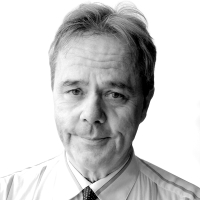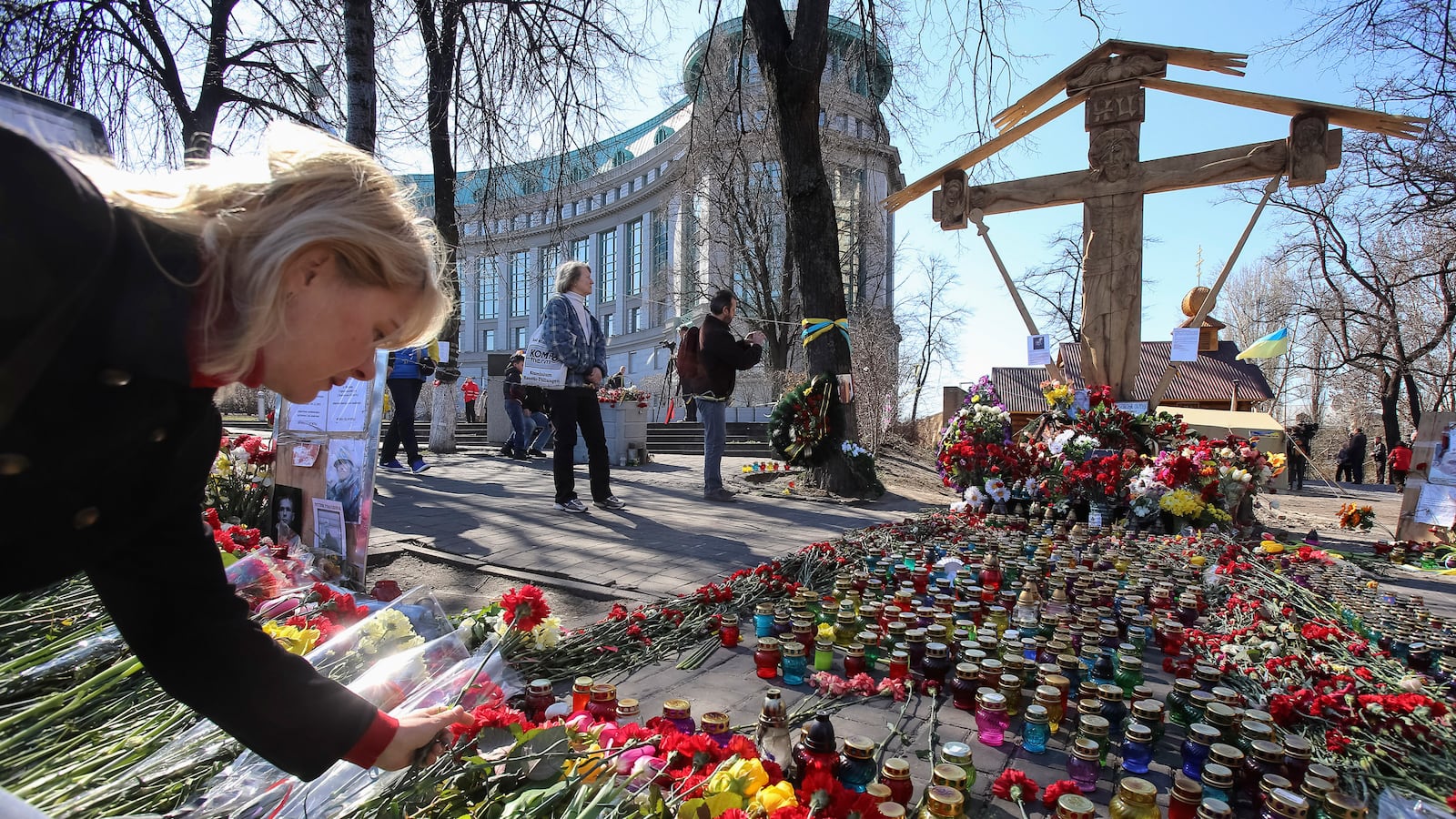On Sunday evening, six seminarians were up on the stage at the Ukrainian Orthodox Church cultural center in New Jersey, singing in their native tongue what has become known as the Hymn of the Maidan.

Oh bury me, then rise ye up And break your heavy chains And water with the tyrants’ blood The freedom you have gained. And in the great new family, The family of the free, With softly spoken, kindly word Remember also me.
Along the walls were photos of “The Heavenly Hundred,” as the protestors killed during the protests in Ukraine in February are called. The original plan had been for the photos to be carried in a solemn procession led by children from this hall to the Ukrainian Memorial Church that rises nearby with startling magnificence from the scruff of a former farm. Similar observances involving hundreds of thousands of mourners were conducted in Ukraine as part of a tradition in which the dead are remembered at the close of a 40-day mourning period.
The continuing rain had forced the organizers in New Jersey to conduct the remembrance inside the community hall. A small Ukrainian flag and a candle was set before each of the photos, which were accompanied by a short bio that included the fallen hero’s age.
“From 17 to 82,” said an Orthodox subdeacon named Richard Jendras. “These people left their home in the morning doing what they felt they had to do for their country. They just had enough. People had enough.”
Earlier in the day, Jendras had Skyped with family in Ternopil in western Ukraine who reported that 25,000 had attended the 40th day remembrance there. He had then driven to the Ukrainian Orthodox Church headquarters in South Bound Brook.
Jendras donned his black cassock in the parking lot and dashed through the rain to the cultural center just across from a new memorial to the victims of the Chernobyl disaster. He now joined in lighting the candles set before the photos of the Heavenly Hundred, pausing to say a quick prayer for each of the fallen. One of them was a 35-year-old man holding twin infants.
“He leaves his parents, his wife and four children,” Jendras noted.
At 7 p.m., a group of children in traditional Ukrainian attire led the procession into the hall that was to have culminated in a service outside the church. The church is too small for a large gathering, having been constructed primarily as a memorial to the millions of Ukrainians who died in the famine that Stalin deliberately engineered between 1932 and 1933. That nightmare had been followed by the deaths of millions more during World War II.
“History has not been kind to Ukraine,” Jendras said. “The thing is, Ukrainians find something to smile about as well. You can’t be a Ukrainian if you don’t know how to cry and you don’t know how to dance.”
As is the way with the Ukrainian Orthodox, the service was not spoken, but sung. That included the names of the Heavenly Hundred, which the clergy took turns singing, turning each into a mournful melody of pure grace.
A baby began to fuss among the 200 congregants who sat before a stage turned to an altar, but was quieted by the singing, which distilled to a tenderness.
“The heroes of the Ukrainian nation who gave up their lives in the name of freedom,” a cleric said in English. “Those who sacrificed their lives for you.”
As the prayer service came to a close, Metropolitan Anthony, the leader of the Ukrainian Orthodox Church in America, spoke.
“The Ukrainian nation has suffered nothing but cataclysm after cataclysm after cataclysm, horror after horror after horror,” he said. “How can a nation survive when its future is taken away from it? But survive it has.”
He addressed those who murdered the protestors whose candle-lit photos lined the hall.
“You may have killed the heroes of Ukraine,” Anthony said. “But we promise you that heroes do not die. They will continue to serve the nation as martyrs of the cause.”
He repeated his message directly to their primary foe.
“We say to you tonight Mr. Putin, and any more like you, heroes do not die.”
Behind Anthony was a golden depiction of St. Volodymyr the Great and his grandmother, Olga Prekrasa. Volodymyr was the 10th century monarch who first brought Christianity to Kiev. He subsequently spread the faith to what became Russia, which embraces him as a patron saint. Putin has suggested that this link gives Russia an historical claim to Ukraine, a notion that Ukrainians such as Jendras consider inverse reasoning.
“The Russians were playing in the mud when Kiev was an up and running civilization,” Jendras said.
Ukrainian civilization had reached a new high with the influence Taras Shevchenko, a 19th century poet whom Jendras describes as a kind of prophet bard. This year marks the bicentennial of his birth, which for many Ukrainians adds all the more significance to the protestors having adopted his poem Zapovity—or Testament—as their anthem.
When six seminarians from western Ukraine followed Anthony onto the stage and sang the Hymn of the Maidan, the audience stood unbidden.
When I am dead, bury me In my beloved Ukraine, My tomb upon a grave mound high Amid the spreading plain, So that the fields, the boundless steppes, The Dnieper’s plunging shore My eyes could see, my ears could hear The mighty river roar.
An eight year-old named Elizabeth walked down a row of the photos in a black dress and black party shoes, pausing at the ones in which the fallen hero was with a child. She paused longest at a photo of a 32-year-old man smiling with his wife, a son and a daughter, who looked about her age.
Up on the stage, children from a Saturday Ukrainian studies class took turns reciting verses of a long poem they had composed. The smallest of them was a boy who proved to have a surprising loud voice. The Heavenly Hundred surely would have loved him.
“It’s always the little ones,” Jendras said. “Oh boy, send him to Putin.”






